Recapping part one, Argentinian architect Francisco Salamone produced an astonishing 60+ buildings in the four-year period 1936-1940. As a devoted Salamoniac, upon my return to Buenos Aires, I rented a car, turned around, and headed back to the Argentine countryside to see more of Salamone’s works.
I picked a route that passed three towns where Salamone left his mark, including the lost city of Villa Epecuen.
I would never attempt driving in Buenos Aires, but driving in the Pampas was easy. Many towns were connected by just one road, making it difficult to get lost. I managed, (to get lost) but only once.
Traffic? See for yourself.
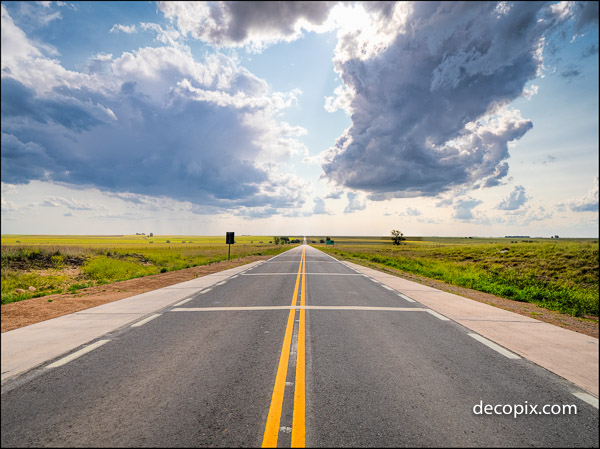
Rush hour in the Pampas
As a public service, something I learned the hard way. Rental cars in Argentina have manual transmissions, and on new Toyota Corollas, there is a secret release switch that must be engaged to put the car in reverse. Just below the gearshift knob, there is a collar. Pull up on this collar and you can back up. If you are unaware of this feature (as I was) my best to you.
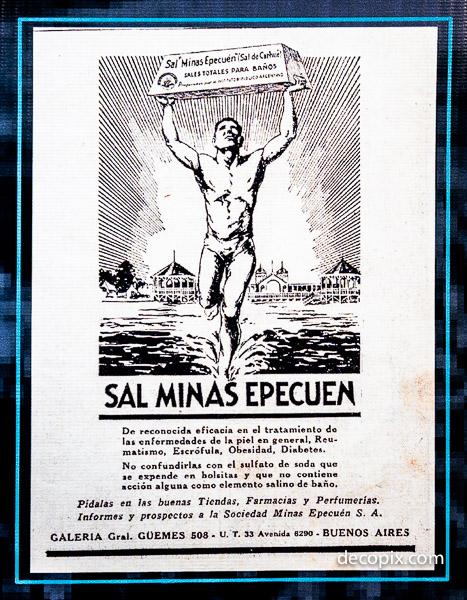
Courtesy, Epecuen Museum
Villa Epecuen was built in the 1920s as a resort. People took the train from Buenos Aires to relax and enjoy the health benefits of the salty water. An entire town grew up near the lake, but in 1985, heavy rains caused a dam to burst and the town was flooded.
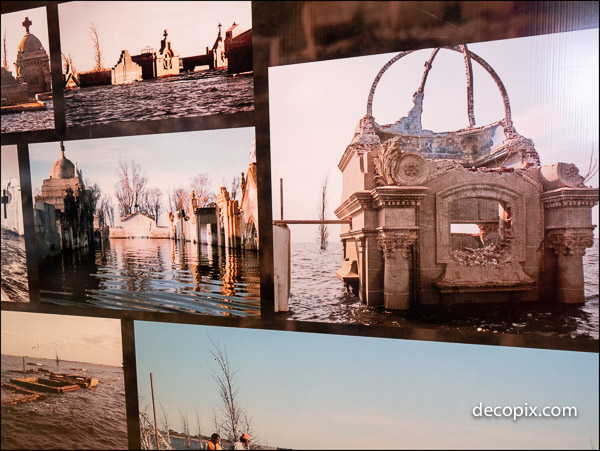
Courtesy, Epecuen Museum
Then, in 1994, the water receded, and the town re-emerged! What makes this story even more unusual is that it all happened fairly recently. In many places, photos are posted, showing dally life in Epecuen before the flood.
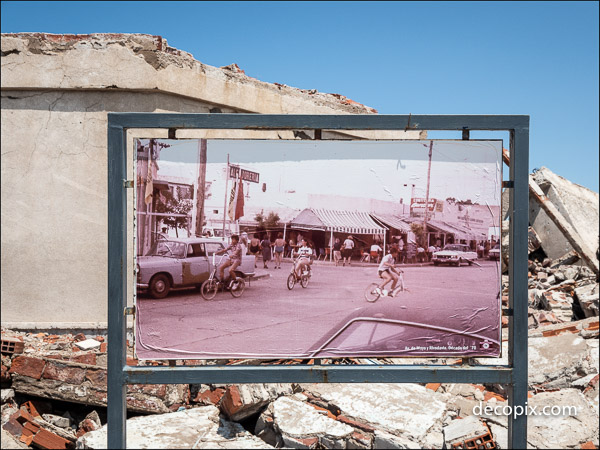
Life before the flood…
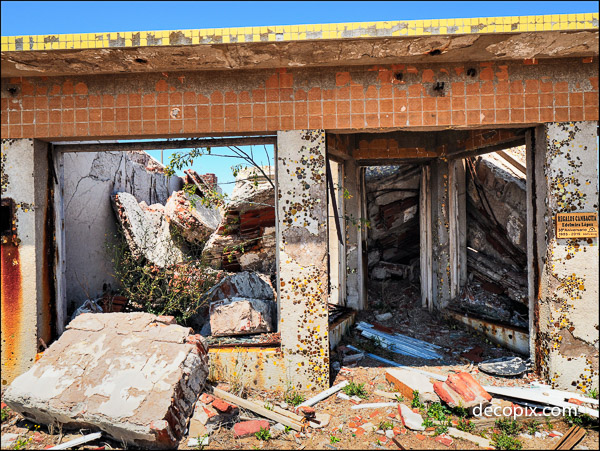
…and after.
Photographically, the ruins were certainly interesting, but what made the place almost magical was that it seemed both dead and very alive at the same time. When I got to my hotel in Carhue (the nearest inhabitable town) the lady at the desk advised going to the lake at sunset. I’d driven all day and didn’t feel like it, but it was the right thing to do.
Driving Epecuen’s roads at dusk, past rows of dead trees, I saw birds everywhere. People were taking a dip in the lake as if the place had never flooded.
Down a dusty road was Epecuen’s matadero, abandoned and crumbling, yet still imposing.
In the morning, I returned to Epecuen and spent a couple hours walking though town.
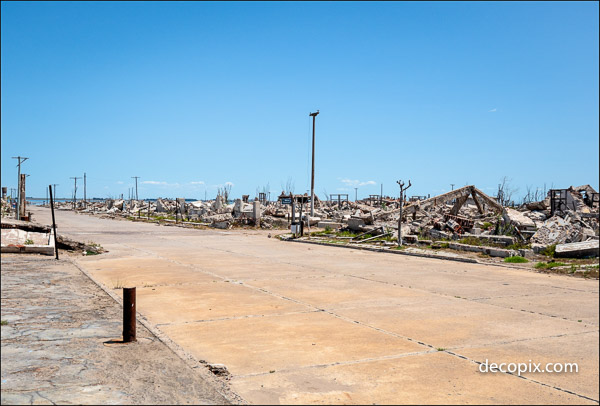
All is as it was. Telephone poles, street signs at intersections. But no people. Just visible at the end of the street is the lake that caused this devastation.
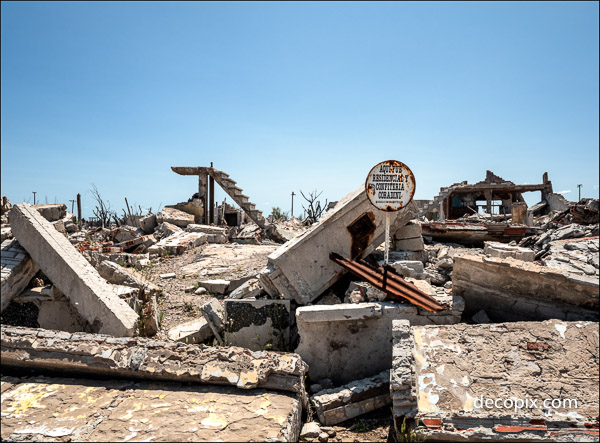
Signs are posted, telling you whose house you’re looking at.
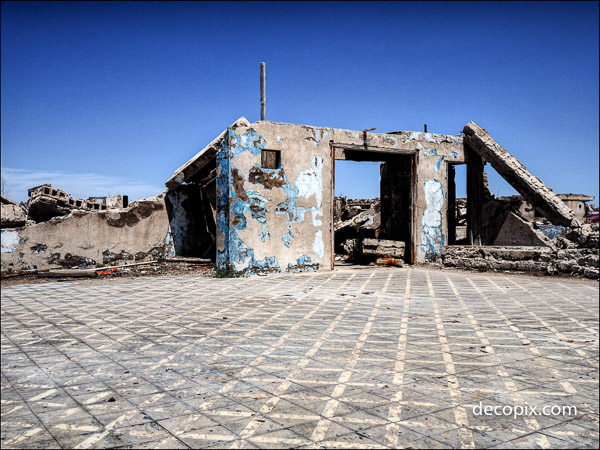
Some ruins are more interesting than others but you get the idea.
By the way, you’re welcome to drive on the original roads, although I decided not to.
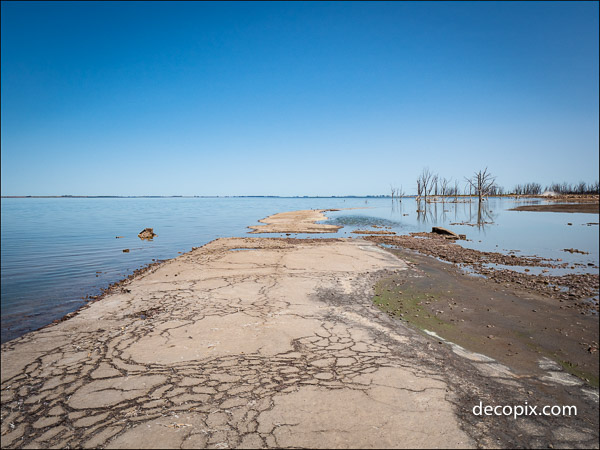
One of the original roads in Epecuen. The newer roads aren’t much better but at least they’re not submerged.
I returned to Carhue to see the Salamone designed City Hall. It was a hot day, so I stopped at the hotel to pick up a bottle of water. To get inside, I had to make my way past the guard dog (see photo.)
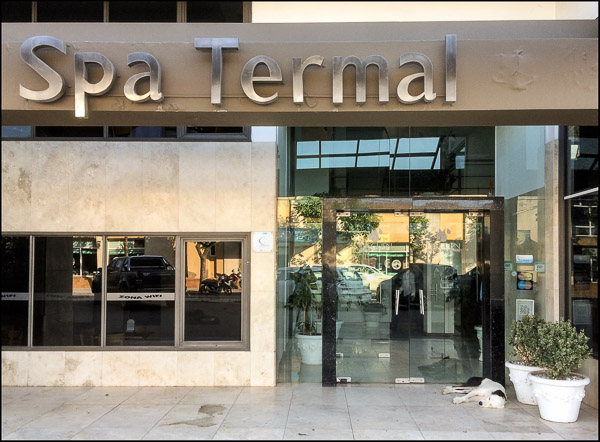
The hotel in Carhue had a typically aggressive Argentine dog at the entrance.
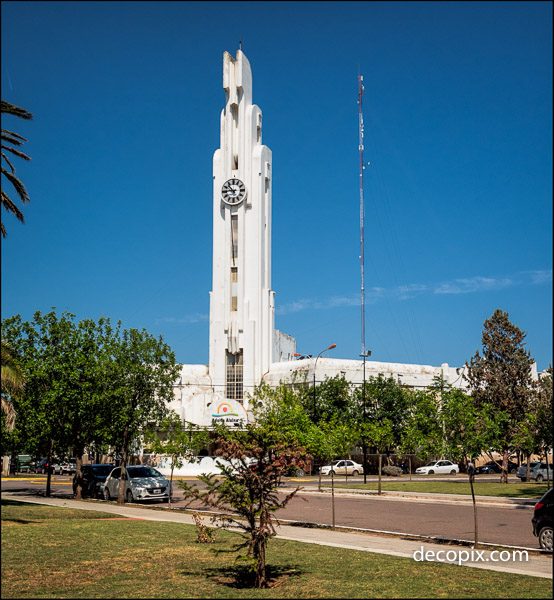
City Hall, Carhue, Argentina
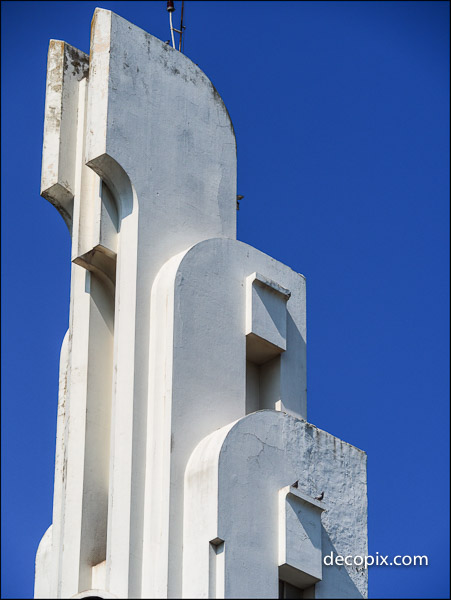
Tower, Carhue City Hall
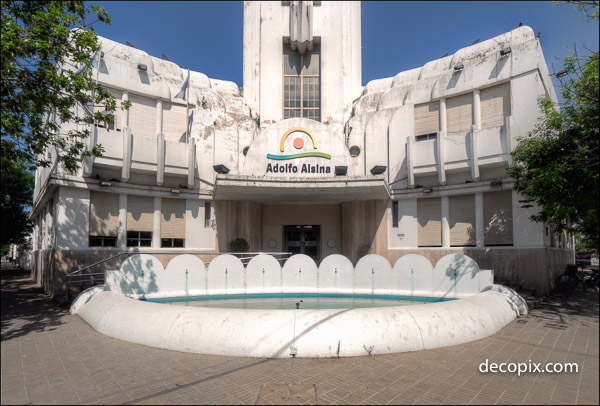
Main entrance and fountain, Carhue City Hall (Adolfo Alsina was Vice-President of Argentina frrom 1868-1874.)
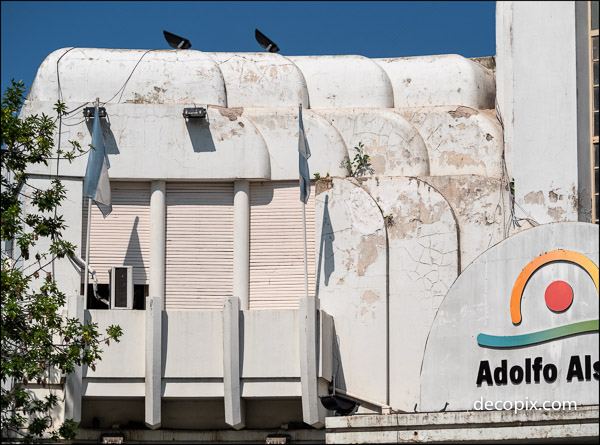
Detail, Carhue City Hall
Carhue’s massive City Hall was open for business, but before I could go inside, I had to sneak past the building’s security dog….
Once inside, up a flight of stairs, I came to a circular lobby.
In case you hadn’t noticed, Francisco Salamone loved circles. A fisheye view of the perfectly circular room:
A room off the lobby had original Salamone chairs.
I suspect the restroom details are Salamone’s work as well.
But all good things must come to an end. The following day, I made my last Salamone stops, in Gaumini.
I wanted to see Gaumini’s matadero because of its tower, which reminded me of a coffee shop from the 1933 Chicago Worlds Fair.
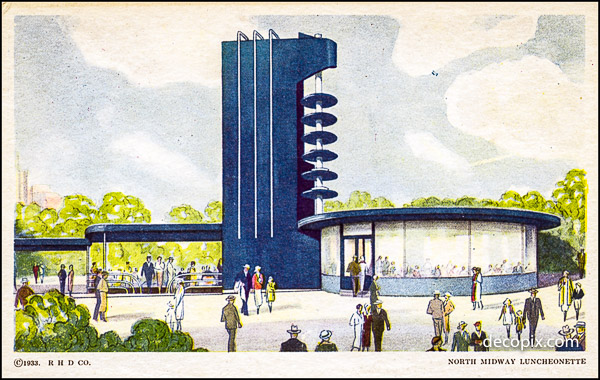
Postcard, Midway Luncheonette, Chicago Century of Progress Exposition 1933-34.
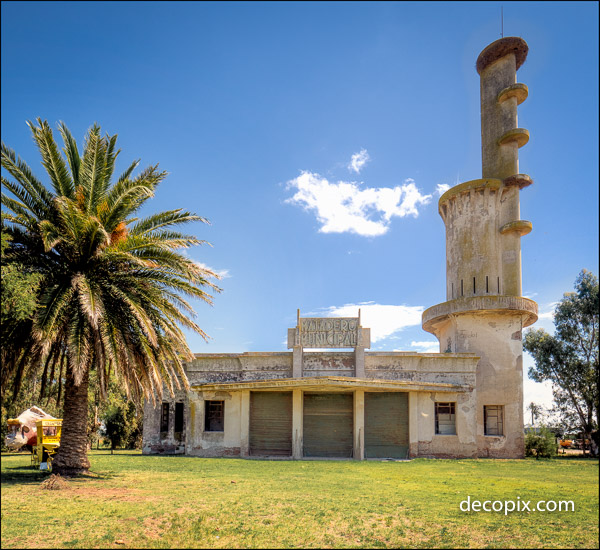
Abandoned matadero, Gaumini, Argentina
The matadero was abandoned except for the birds who built nests on the undersides of the discs. If I had to pick a Salamone favorite, the Gaumini slaughterhouse would probably be it.
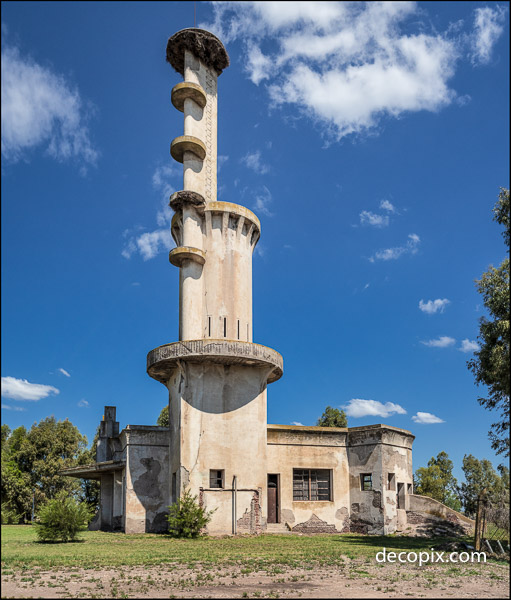
A side view of the matadero. At the right, you can see a ramp for the cattle.
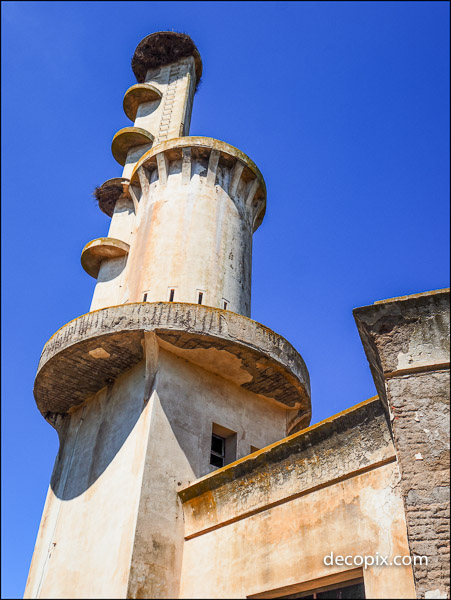
The tower’s discs are popular with birds.
Gaumini’s distinctive City Hall seemed a mix of different influences and honestly, I didn’t think they came together as well as some of his other work.
It was Sunday, so I couldn’t go inside, but a guard dog was on duty, nonethess.
These days, everything reminds me of something else. Looking at Gaumini City Hall from the side, I wondered…could Salamone have seen Erich Mendelsohn’s Einstein Tower?
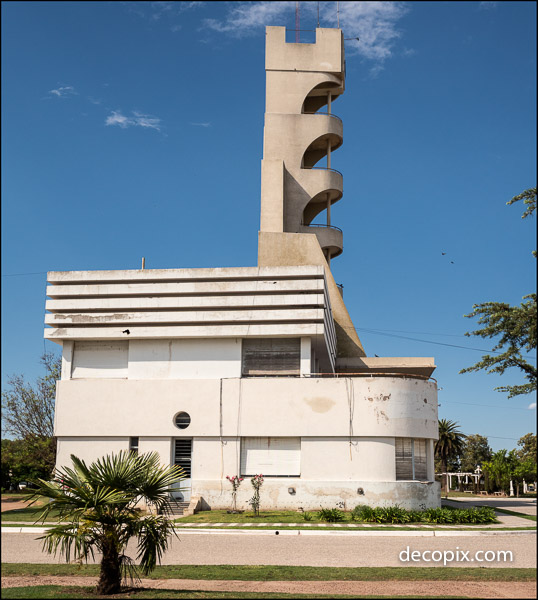
Side view, City Hall, Guamini, Argentina
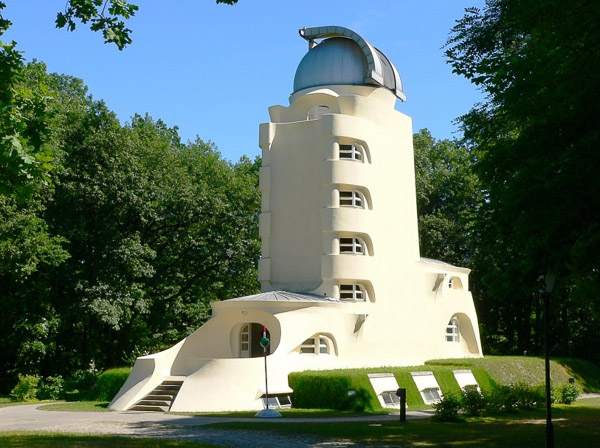
Einstein Tower, Potsdam, Germany. Courtesy, Astrophysikalisches Institut Potsdam.
Alas, it was time to go. While photographing the fountain in front of City Hall, the dog I had seen earlier hopped in, getting a much needed bath.
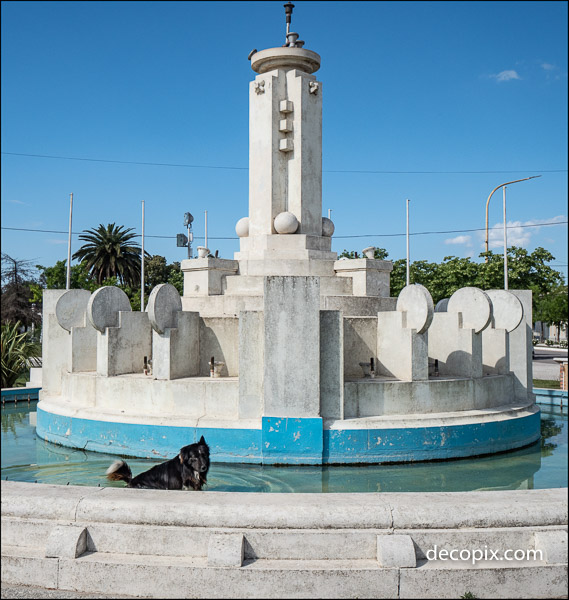
Deco Dog!
Now it was time to get on the road before dark, get to the airport and on to Buenos Aires (where I would not be driving!)

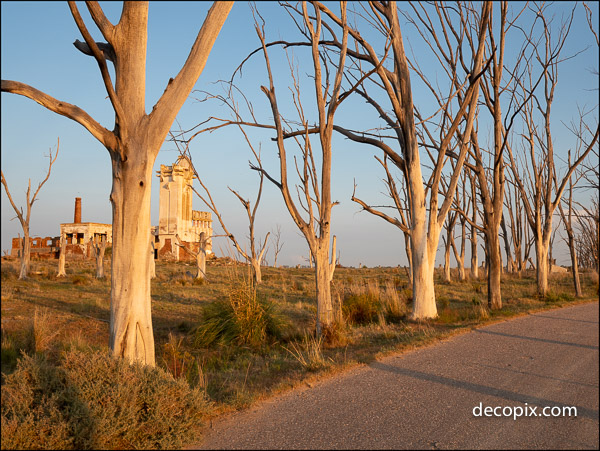
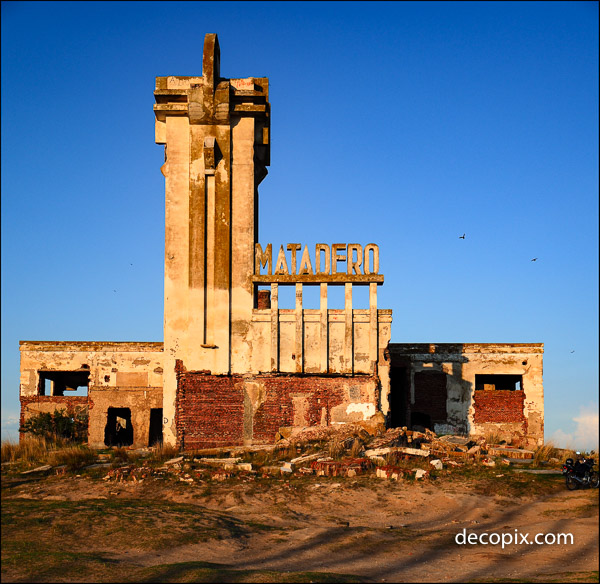
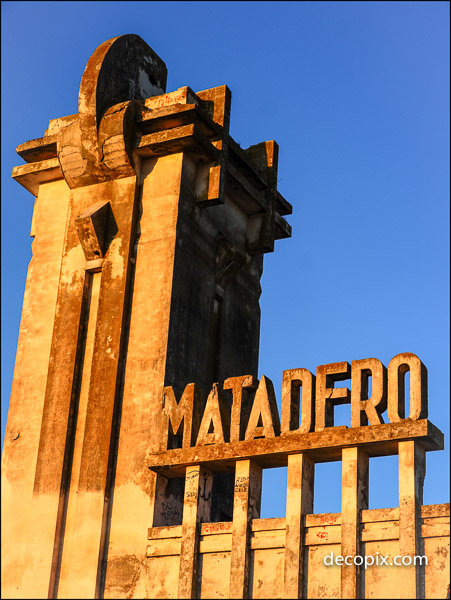
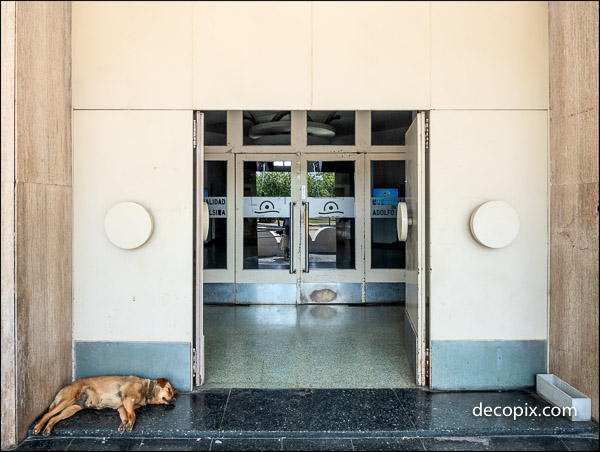
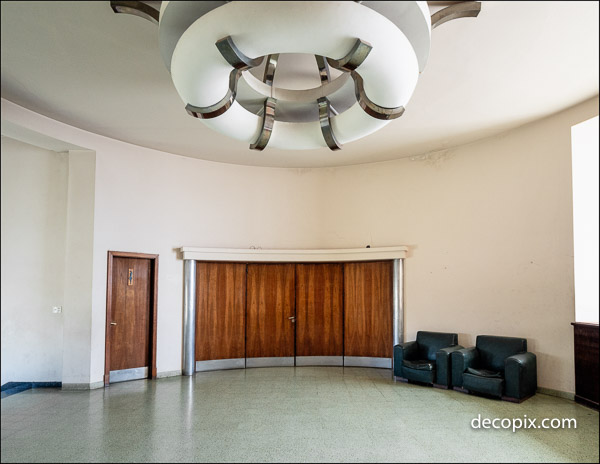
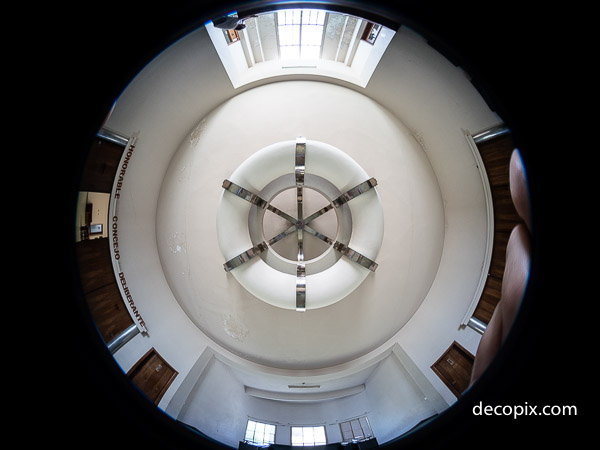
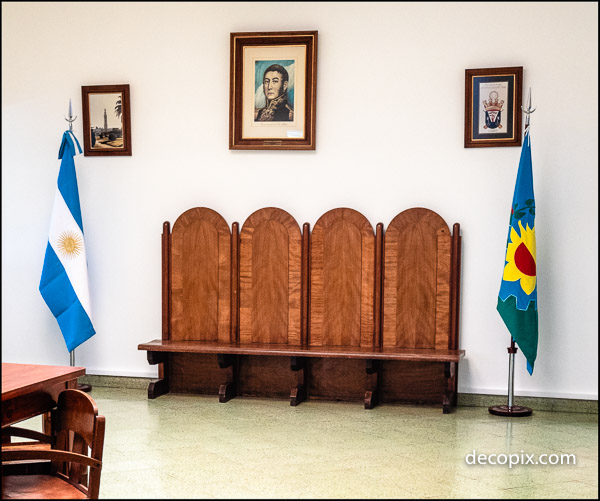
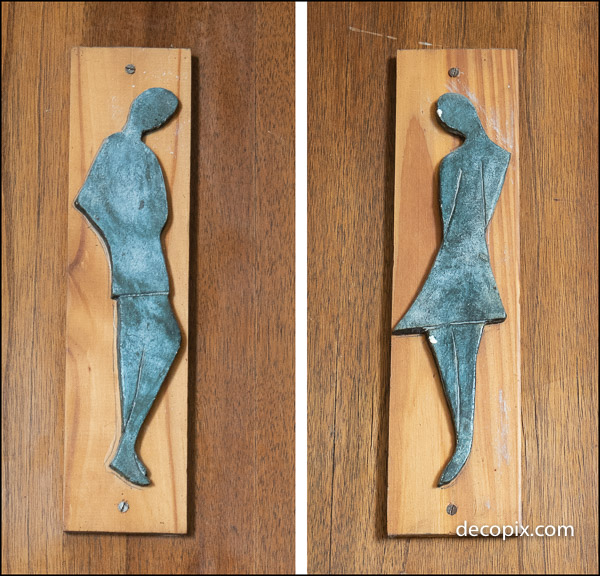
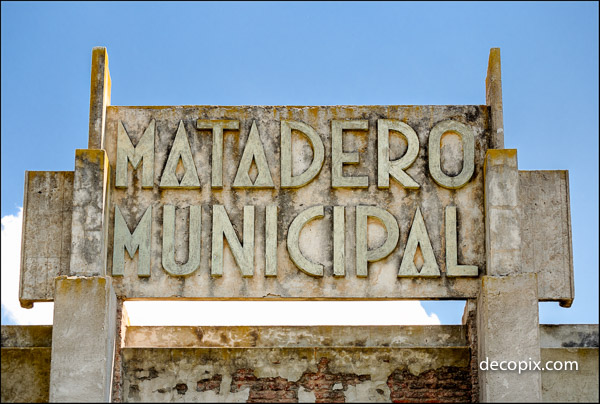
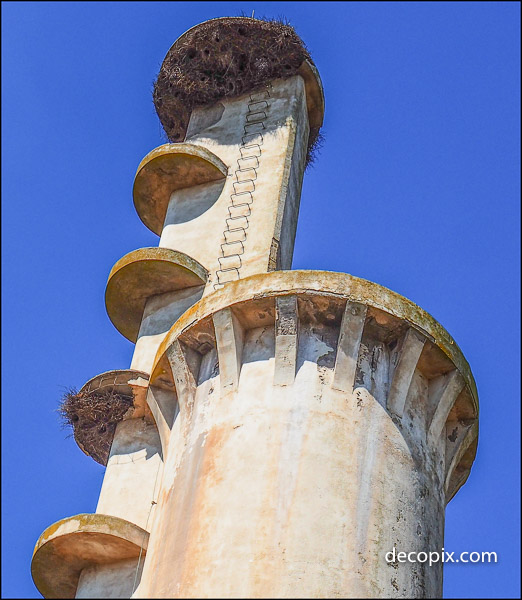
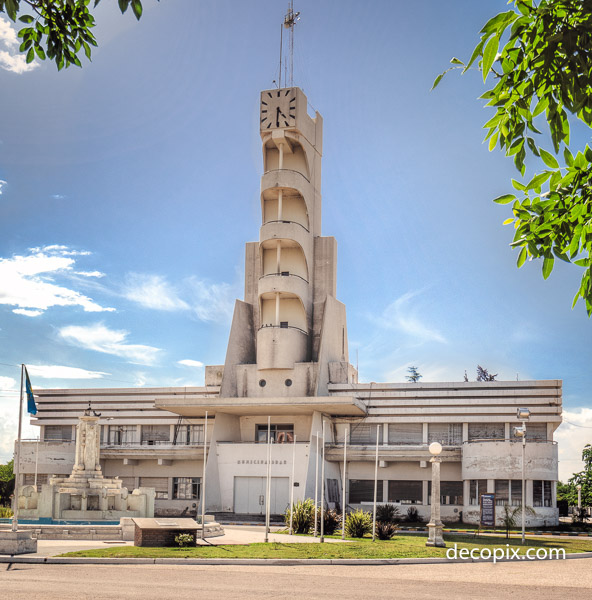
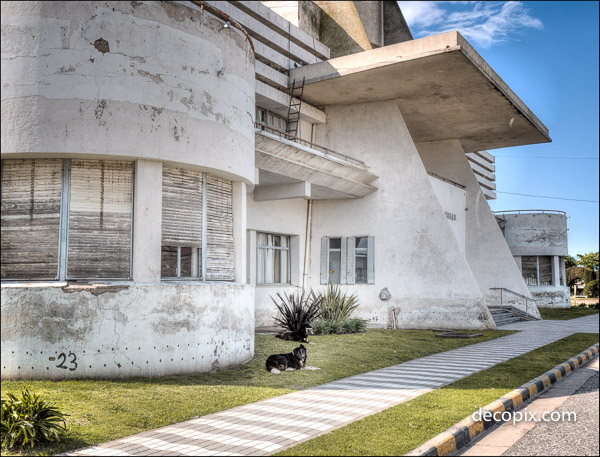
Test comment